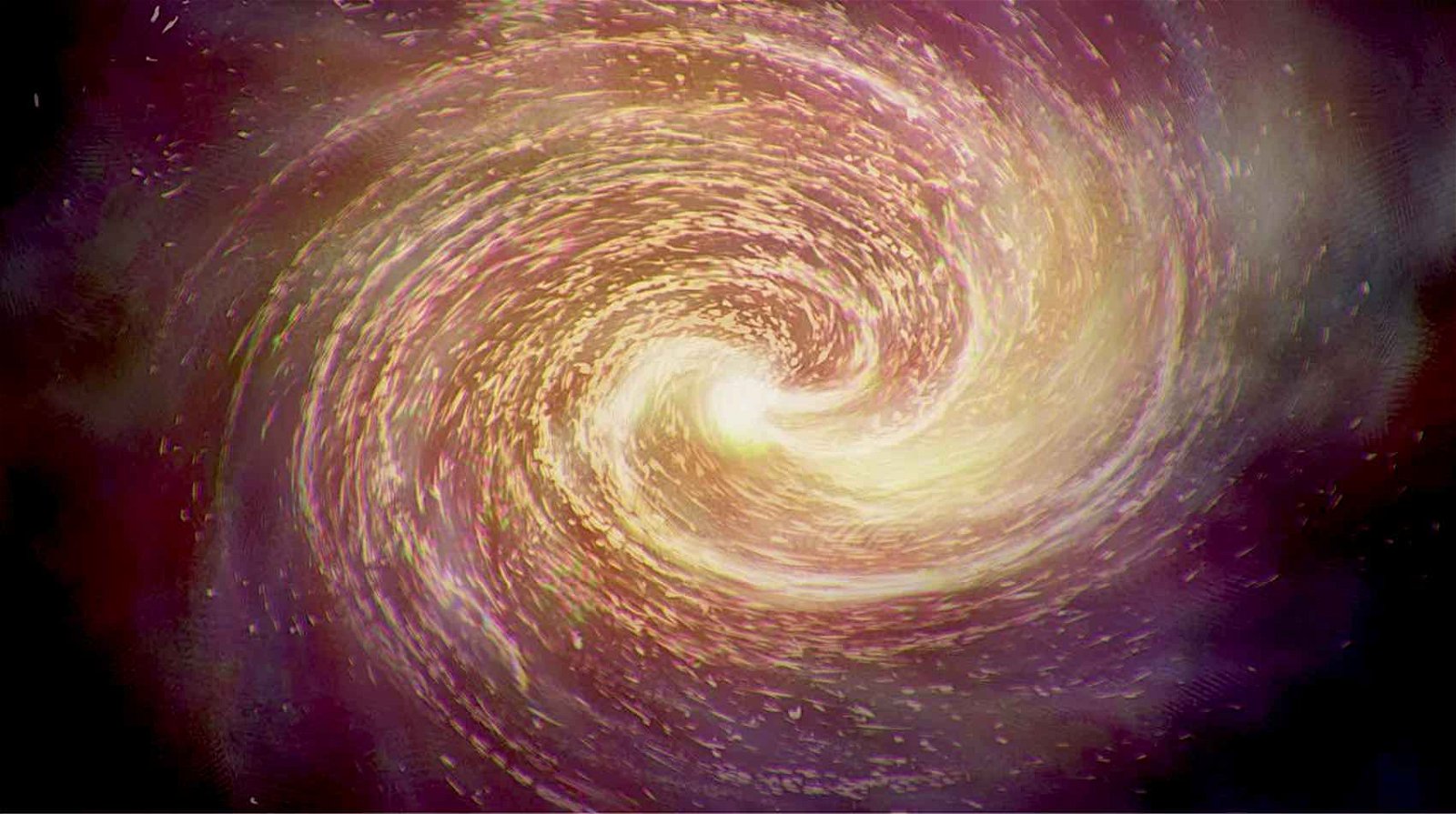At a lab in the center of the University of California, Berkeley, just off Oppenheimer Way, the street named for the “father of the atomic bomb,” a team of physicists meticulously adjusts a sophisticated apparatus in the hunt for the elusive “chameleon particle.”
A hum of anticipation fills the air as they prepare to embark on an experiment that could unveil one of the Universe’s most profound mysteries: dark energy.
Assuming the Lambda-CDM model of cosmology is correct, dark energy represents nearly 70% of the total energy of the observable Universe and is the impetus behind its accelerated expansion. Yet, despite its vast influence, this mysterious force remains shrouded in mystery.
The first direct evidence for dark energy was discovered in 1998 by two teams of scientists led by Dr. Saul Perlmutter of Lawrence Berkeley National Laboratory, Dr. Brian P. Schmidt of Australian National University, and Dr. Adam G. Riess of John Hopkins University.
Through observations of distant supernovae, the researchers realized that the Universe was expanding at an ever-accelerating rate. This revelation won the three scientists the 2011 Nobel Prize in Physics.
“The acceleration is thought to be driven by dark energy, but what that dark energy is remains an enigma – perhaps the greatest in physics today,” the Nobel Prize announcement by The Royal Swedish Academy of Sciences reads. “What is known is that dark energy constitutes about three-quarters of the Universe. Therefore, the findings of the 2011 Nobel Laureates in Physics have helped to unveil a Universe that, to a large extent, is unknown to science. And everything is possible again.”
Independent observations, including cosmic microwave background experiments and galaxy redshift surveys, have confirmed the existence of dark energy. Yet, twenty-six years after its initial discovery, the exact nature of dark energy remains “perhaps the greatest” enigma in physics.
Various theories have been proposed to explain its existence, including the possibility that dark energy could be the vacuum energy of space or a dynamic energy field called quintessence.
Another intriguing proposal is that dark energy is mediated by a yet-to-be-discovered exotic scalar particle that exerts a repulsive force depending on the surrounding matter’s density. This hypothetical particle, known as a “chameleon particle” or “symmetron,” would represent a fifth fundamental force of nature, much weaker than gravity.
In the emptiness of space, a chameleon particle would exert a repulsive force over long distances, driving the Universe’s accelerated expansion. However, the particle’s reach would be extremely limited on Earth, surrounded by matter. This would explain dark energy’s anomalous impact on the accelerated expansion of space.
Now, in the Holger Müller lab at UC Berkeley, physicists are breaking new ground to solve the mystery of dark energy. They have designed the most precise instruments to date, capable of measuring even the tiniest gravitational anomalies.
Detecting even minor deviations in the accepted theory of gravity would be a massive breakthrough, offering evidence for the existence of the hypothetical chameleon particle.
In recent experiments, physicists designed a new instrument that combines an atom interferometer for precise gravity measurements with an optical lattice to hold the atoms in place.
This setup allowed researchers to immobilize free-falling atoms for significantly more extended periods, enhancing the precision of their measurements by a factor of five compared to previous experiments.
By immobilizing small clusters of cesium atoms within a vertical vacuum chamber, the researchers could split each atom into a quantum state. Half of the atom is closer to a tungsten weight in this state, allowing scientists to measure the phase difference between the two halves of the atomic wave function. This process enables them to calculate differences in gravitational attraction with unprecedented accuracy.
In findings just published in Nature, researchers revealed that despite the revolutionary experimental design, results failed to show any deviations from Newtonian gravity.
Nevertheless, physicists are hopeful that with expected improvements in the precision of their new instrument, new and exciting possibilities will be opened for testing theories about the nature of dark energy, including the existence of the chameleon particle.
This new technology’s ability to hold atoms for up to 70 seconds and potentially 10 times longer expands the possibilities of investigating gravity at the quantum level, explained Dr. Holger Müller, a UC Berkeley professor of physics and study co-author.
Previous experiments have well established the quantum nature of three of the four forces of nature: electromagnetism and the strong and weak forces. However, the quantum nature of gravity has never been verified.
“Most theorists probably agree that gravity is quantum,” Dr. Muller said in a release by UC Berkeley. “But nobody has ever seen an experimental signature of that.”
“It’s very hard to even know whether gravity is quantum, but if we could hold our atoms 20 or 30 times longer than anyone else, because our sensitivity increases with the second or fourth power of the hold time, we could have a 400 to 800,000 times better chance of finding experimental proof that gravity is indeed quantum mechanical.”
This new experimental design can hold atoms in a quantum superposition of two states, each experiencing slightly different gravitational forces, allowing researchers to detect minute differences in gravitational attraction. This capability could eventually reveal the presence of the hypothesized chameleon particles or other unknown exotic phenomena related to dark energy.
In addition to its potential for discovering dark energy, the lattice atom interferometer designed by Muller’s team holds promise for various applications, including quantum sensing.
This technology is particularly sensitive to gravity and inertial effects, making it suitable for building advanced gyroscopes and accelerometers. The optical lattice’s ability to hold atoms rigidly in place also makes it resilient to environmental imperfections or noise, which could allow for precise measurements in challenging environments, such as at sea.
Since 2015, Dr. Muller has searched for evidence of chameleon particles using an atom interferometer.
“Atom interferometry is the art and science of using the quantum properties of a particle, that is, the fact that it’s both a particle and a wave. We split the wave up so that the particle is taking two paths at the same time and then interfere [with] them at the end,” Dr. Müller explained. “The waves can either be in phase and add up, or the waves can be out of phase and cancel each other out. The trick is that whether they are in phase or out of phase depends very sensitively on some quantities that you might want to measure, such as acceleration, gravity, rotation, or fundamental constants.”
In initial tests using an atom interferometer and cesium atoms launched into a vacuum chamber to mimic the emptiness of space, Dr. Muller and his colleagues could observe the 10 to 20 milliseconds it took for atoms to rise above a heavy aluminum sphere.
In 2019, physicists at the Muller lab could observe the atoms much longer, up to 20 seconds, by adding an optical lattice and tungsten weight to increase the effect of gravity.
In another more recent experiment, published in the June 2024 edition of Nature Physics, postdoctoral fellow Cristian Panda and Dr. Muller demonstrated the ability to extend the hold time of atoms from 20 seconds to an astonishing 70 seconds.
The researchers achieved this remarkable feat by stabilizing a laser beam within the lattice atom interferometer’s resonant chamber and tweaking the temperature to less than a millionth of a Kelvin above absolute zero.
Though results have so far failed to show the existence of the chameleon particle, researchers say their repeated success in expanding the time to observe gravitational effects lays the groundwork for even more precise experiments.
Dr. Muller and his team are currently building a new lattice atom interferometer with improved vibration control and lower temperatures. This next-generation instrument is anticipated to produce 100 times more precise results than their recent experiments. This level of precision could be sensitive enough to finally detect the quantum properties of gravity.
As the researchers continue to push the boundaries, the potential discovery of dark energy feels tantalizingly close. Ultimately, these advancements at UC Berkeley represent a significant step forward in unraveling one of the Universe’s greatest mysteries and the true nature of dark energy.
Researchers say the successful demonstration of gravitational quantum entanglement would be a breakthrough comparable to the first demonstration of quantum entanglement of photons by the late Dr. Stuart Freedman and Dr. John Clauser in 1972.
In 2022, Dr. Clauser was awarded the Nobel Prize in Physics for his part in proving the existence of quantum entanglement, a phenomenon Albert Einstein once famously described as “spooky action at a distance.”
Tim McMillan is a retired law enforcement executive, investigative reporter and co-founder of The Debrief. His writing typically focuses on defense, national security, the Intelligence Community and topics related to psychology. You can follow Tim on Twitter: @LtTimMcMillan. Tim can be reached by email: tim@thedebrief.org or through encrypted email: LtTimMcMillan@protonmail.com

